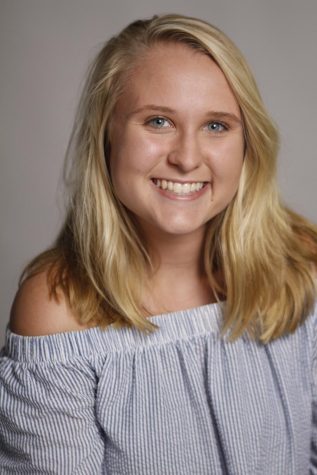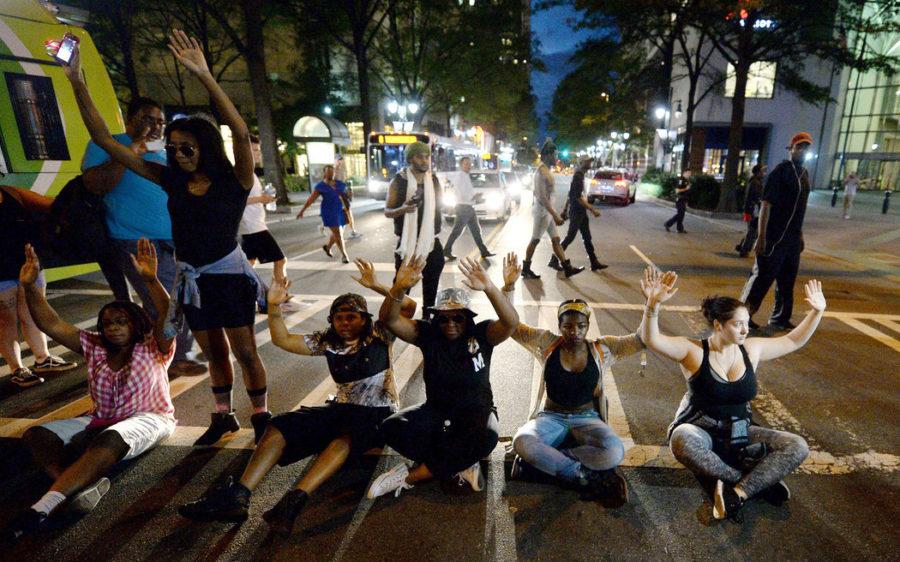Protests continue in Charlotte, North Carolina
The fifth day of violence continues in Charlotte as fear strikes civilians, police officers and the nation.
Protesters block I-277 during 5th day of unrest in Charlotte, North Carolina.
On Thursday afternoon, North Carolina declared itself as being in a state of emergency from violent demonstrations that shook up the nation following a fatal shooting. After a Charlotte police officer reportedly shot and killed 43-year old Keith Scott, father of 7, in Charlotte on Tuesday, an uproar of protesting sparked and is causing much chaos in the state as many reveal anger towards the incident that took place.
With protest occurring largely in North Carolina, Chicago and New York, police have made at least 44 arrests after mobs of protesters continued to perform violent demonstrations and civilian-civilian shootings. Much of the protests stem from Black Lives Matter, a major activist group that has become increasingly relevant in today’s society. Sequoit junior Nikki Rigney believes it is time to step back and take a broader look upon the violent racial issues taking place in Charlotte.
“I believe Black Lives Matter is making the situation a bigger deal than they say it is,” Rigney said. “White people are getting shot too; it’s not discriminating just against African-Americans.”
Multiple videos have been released following the week’s chaos, especially around the shooting of Scott. Charlotte-Mecklenburg Police Chief Kerr Putney has been the main focus of the protests. While the nation waited eagerly for proof of the supposed police and citizen actions, the Charlotte Police Department released a video on Saturday, taken by the body camera of a first-responder during the incident. However, the video eased little tension among Charlotte protesters and gives little information on if Scott was holding a gun and the validity of the officer’s gun shot.
History teacher Stephen Rose explained how there is a serious issue facing our nation, especially with violence and the Black Lives Matter protests.
“A group of citizens feel that their rights and voice do not matter compared to those of other groups,” Rose said. “The group is lashing out in anger over years of marginalization. These instances won’t stop until this group of citizens has a true sense of belonging in the US.”
Kerr Putney, the main officer on the case, continues to address ongoing questions as controversy over proper evidence ensues within the investigation of the incident.
“…absolute definitive visual evidence that would confirm that a person is pointing a gun; transparency is in the eye of the beholder,” Putney said. “If you think I’m saying we should display a victim’s worst day for public consumption, that is not the transparency I’m speaking of.”
Scott was shot by an African-American officer who, according to witness account and video, tried multiple times to get Scott to drop his weapon. The shot was a green light for Black Lives Matter advocates to voice and physically defend their feelings on racist acts that have taken place within the police force.
Transparency in the investigation has been a major issue for officials and those affected by the shooting of Scott. But more importantly, issues within the African-American community concerning the equal treatment of different races have continued to rise and create disputes, showing that bigger issues must be discussed and resolved in the future.


